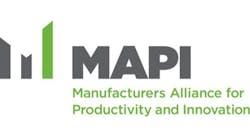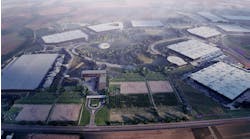The outlook for manufacturing in 2015 is still optimistic but less so than initially predicted because of a collapse in oil and natural gas prices, reduced growth from a strong dollar, excess inventory and a late 2014 surge in consumers’ spending that depleted their fuel savings, a leading manufacturing economist said yesterday.
Daniel J. Meckstroth, chief economist for the trade organization MAPI, the Manufacturers Alliance for Productivity, lowered the group’s forecast for manufacturing growth from 3.7%to 2.5%, down from the 3.5% growth in 2014.
In the past five years, said Meckstroth, manufacturing has grown much faster than the overall economy, averaging 3.9 vs. 2.2 percent respectively. “However, with the downgrade of the forecast, we’re looking for manufacturing production to grow pretty close to the overall growth rate of the general economy this year,” he said.
The forecast was adjusted after a weak first quarter for manufacturing in 2015, in part because of the severe weather and the shrinking of the oil supply chain with Libya producing more oil, the U.S. “dramatically increasing” production and Saudi Arabia defying expectations after the November OPEC meeting and not scaling back on production.
During that period, manufacturing fell at an 1.2% annual rate. Comparatively, in the first quarter of 2014, manufacturing grew by 1.4%.
Meckstroth expects industrial manufacturing production to grow slightly better than the U.S. economy overall, with 2.5% growth in 2015 (down from 3.5% in 2014), 4% in 2016, and 3.1% in 2017.
Unemployment will remain relatively low and expect to see labor shortages by the end of 2016, Meckstroth said.
“Consumer spending will be driven by job growth,” he said. “We need job growth and expect we will have it.”
Meckstroth sees strong growth in the information technology equipment sector and moderate growth in motor vehicles and industrial and transportation equipment. He expects declines in oil and gas drilling and electric utility construction.
He also predicts above-average growth in furniture, non-metallic mineral products, electrical equipment and appliances, as well as a “ramping up of aerospace mainly because Boeing is delivering on these new products after years of production problems.”
Medical equipment and pharmaceuticals should also be growth areas “because of the Affordable Care Act and the demographics of aging” and newly patented pharmaceuticals, he said.





